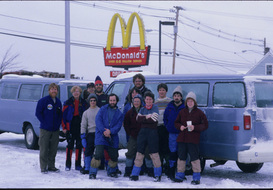
I apologize for the nearly four week delay in providing another “lesson learned”. What can I say; it is hunting season after all. Now that I have a deer in the freezer I can get back to writing. I may skip another week once the rut is in full swing. :-)
Disclaimer – I don’t claim that these are necessarily profound or original. They are what came to mind when, in preparation for a presentation titled: “20 Years of Adirondack Wilderness Expeditions,” I scanned a couple of hundred 35mm slides of the trips I have led. It was only after I had provided the title and description of the presentation that I realized it was more like 35 years of leading Adirondack ventures and that I’m getting older than dirt.
#47 Getting to and from the trailhead is frequently half the battle.
Over the years, in order to travel to the start of my wilderness ventures, I’ve walked, hitchhiked, flown in float planes, ridden boats, a train, bicycle, motorcycle, car, mini-van, cattle truck, school bus and most commonly, the ubiquitous college 15 passenger van. Believe me, getting to the trailhead IS half the battle.
When I directed the Wilderness Recreation Leadership Program at North Country Community College we were rarely able to have professional staff drive us and usually used volunteers. I remember learning, after the fact, that one of our volunteer drivers scared students with his lead-footed driving style. It wasn’t easy scaring WRL students. I quickly realized it was time to look for a new volunteer driver!
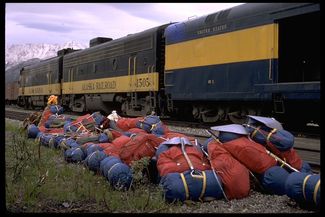
For my first NOLS course in 1970 we traveled from Lander to the trailhead by cattle truck. We didn’t think anything of it. We stood up in the back of the truck and traveled more than 20 miles. With liability issues they way they are today it would be impossible to do that now. It worked fine for Paul Petzoldt, though.
When I climbed Mt. McKinley (Denali) in Alaska we took the train from Anchorage, where we outfitted, to McKinley National Park. Now that was traveling in style. It was a great way to start and end the trip.
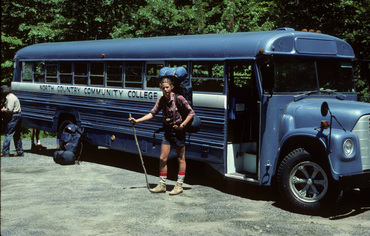
If you are a professional outdoorsman like I was for many years then the 15 passenger van is the vehicle you most commonly used to transport your clientele. From what I was able to gather for this article it still is. If you use something else please leave a comment so I can see what the current practice is.
When I started teaching at North Country Community College in the 1970s reliable transportation was hard to come by. The college owned two vans but they were used by the entire college community and they were kept much longer than their useful life dictated. Eventually the College Association (the arm of the college responsible for athletics among other things) started leasing vans. That made our lives much easier as well as much safer. At one point our hockey coach found a great deal on an old school bus. It was painted NCCC blue and looked great but didn’t run as well as it looked. The other problem with having a school bus is that we needed a bus driver, someone with a Commercial Driver’s License (CDL). In our case the hockey coach was the only college employee with a CDL. If he wasn’t available, which was often as he was also an admissions counselor and spent much of his life on the road, we couldn’t use the bus.
I used to tell my students that getting to the trailhead was the most dangerous part of the trip. Unfortunately some high profile fatal college van accidents have proven me correct. Some interesting statistics, according to the National Highway Transportation Safety Administration, “Of the nearly 11 million passenger car, SUV, pickup and van crashes in 2002 (The most recent year I could find statistics) only 3% involved a rollover.” On the other hand rollovers accounted for a third of all deaths from passenger vehicle crashes. The majority, not surprisingly, were not wearing safety belts. It is no surprise that SUVs, pickups, and vans are more susceptible to rollover as they have higher centers of gravity. Not surprisingly it comes down to driver experience. Driving vans is a different animal than driving sedans. Preston Cline (once a participant on a WEA Professional Short Course I co-instructed) wrote an excellent article a number of years ago analyzing the 15 passenger van issue. You can find it HERE. Unfortunately the article is nearly a decade old and I was unable to reach Preston to see what the latest information regarding vans is. My anecdotal observations are that vans are still very much in use. Institutions however seem to be much more careful about who drives them and what kind of training drivers have.
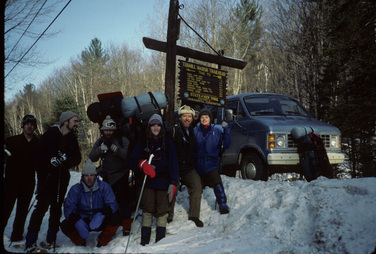
There is a bill that has been bouncing around for a while (S. 554: Motorcoach Enhanced Safety Act of 2009) that would make it even harder for outdoor programs to transport students. For more information visit Rick Curtis’ bog entry: http://www.outdoored.com/Community/blogs/rickcurtis/archive/2010/01/18/driver-legislation.aspx.
Bottom Line:
When traveling to and from the trailhead via motor vehicle you should follow these guidelines:
- Have everyone wear a seatbelt.
- Consider using Mini-Vans instead of 15 passenger vans. They are less likely then 15 passenger vans to roll over in the event of an accident and younger drivers grew up in them so, if they are driving, they are more familiar with how they handle.
- Avoid using a roof rack and move toward a support vehicle or trailer to keep the center of gravity as low as possible.
- One alternative for 15 passenger vans to make them safer is to simply remove the back seat and require that not more then 9 people ride in a vehicle at any one time. You’ll defeat the purpose of removing the seat if you fill the space up with gear. The idea is to reduce the weight in the vehicle in order to make it handle more safely.
- Finally, hire experienced 15-passenger van drivers and spend at least a full day, if not more, training your staff to drive a 15-passenger van that is fully loaded.
To visit Lesson Learned #46 Click HERE
To visit Lesson Learned #48 click HERE.
Bibliography:
http://www.outdoored.com/anm/templates/template1.aspx?articleid=3657&zoneid=1 (2008)
http://www.outdoored.com/Community/blogs/rickcurtis/archive/2010/01/18/driver-legislation.aspx (2009)
http://www.experientialed.org/articles/Article.aspx?ArticleID=166 (2002)



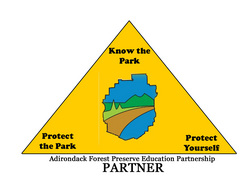
 RSS Feed
RSS Feed

